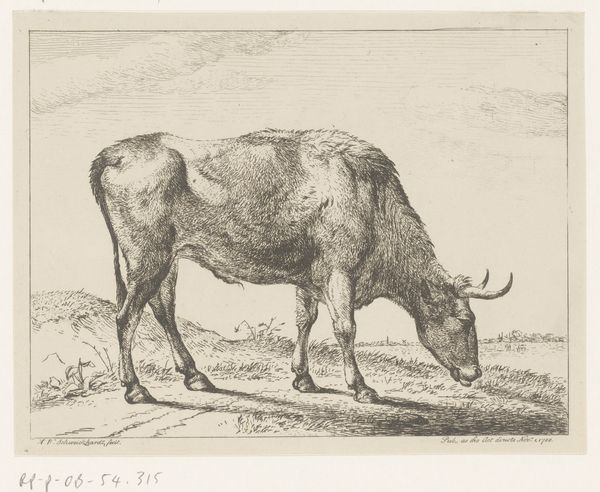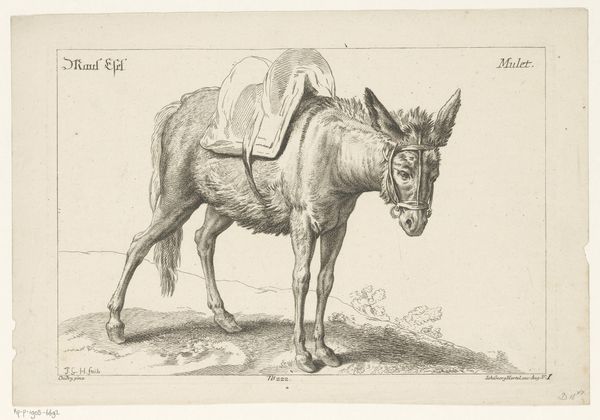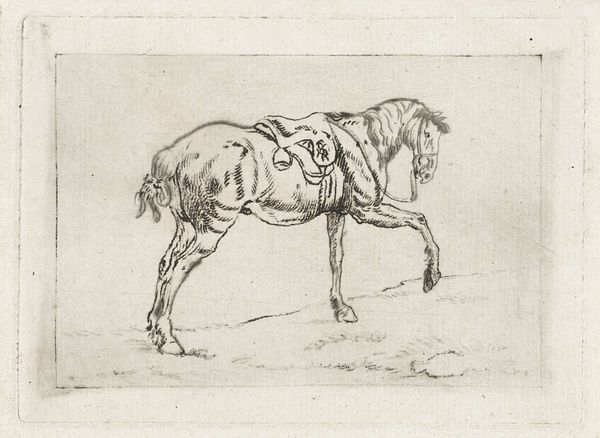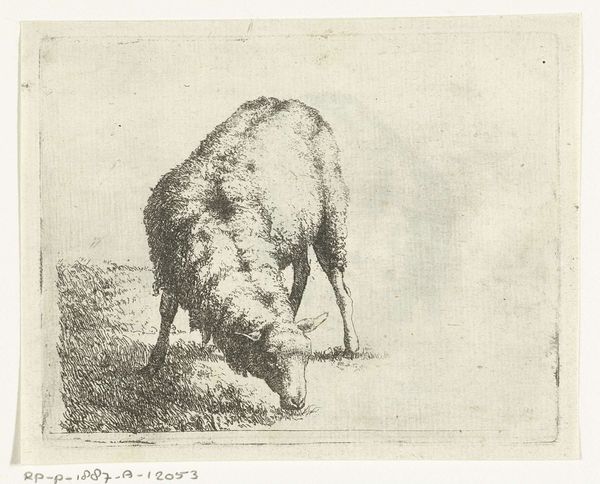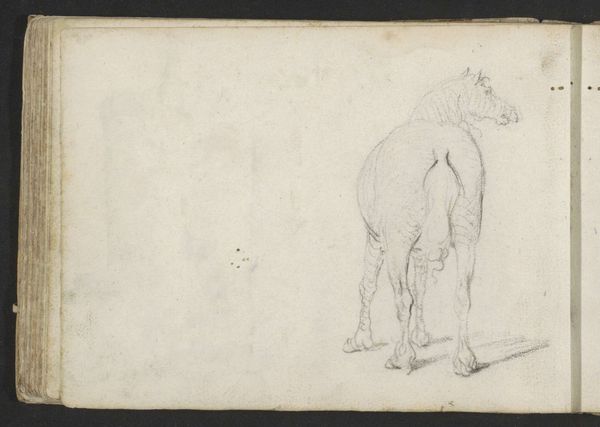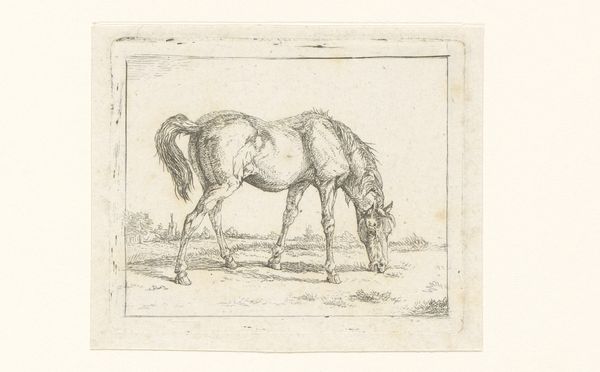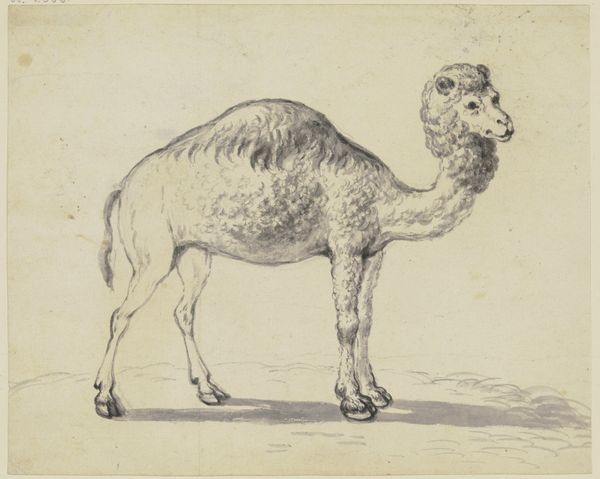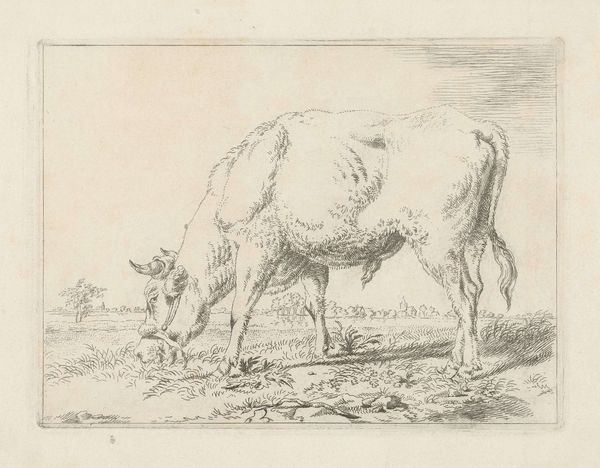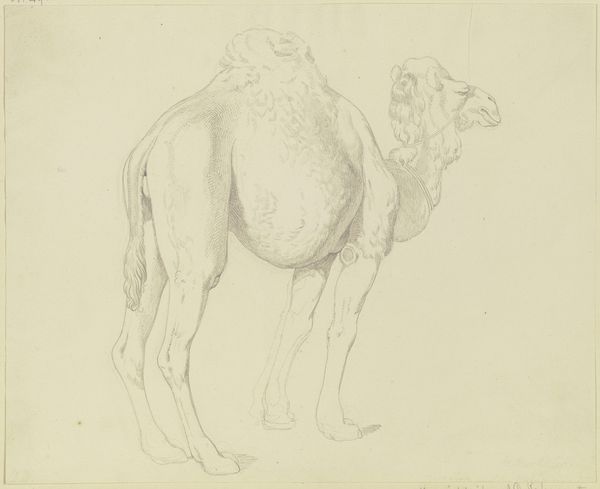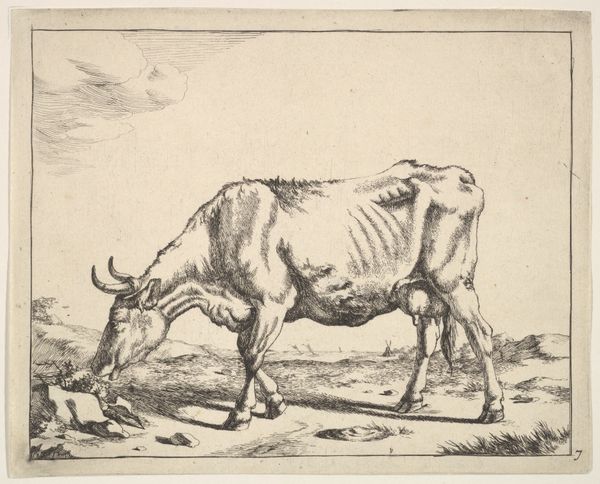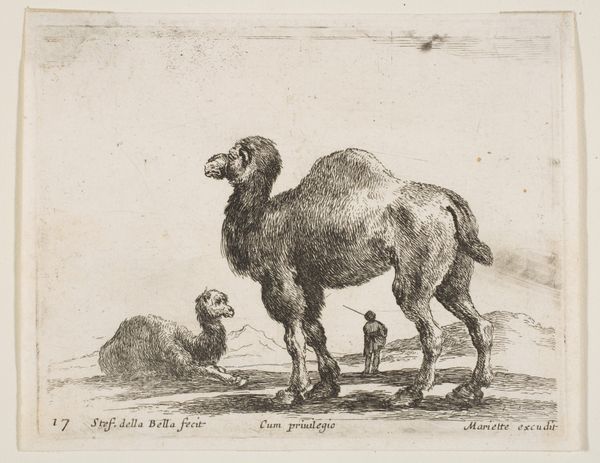
drawing, engraving
#
drawing
#
light pencil work
#
quirky sketch
#
baroque
#
animal
#
pencil sketch
#
landscape
#
figuration
#
personal sketchbook
#
idea generation sketch
#
sketchwork
#
ink drawing experimentation
#
pen-ink sketch
#
line
#
sketchbook drawing
#
pencil work
#
engraving
Dimensions: height 122 mm, width 177 mm
Copyright: Rijks Museum: Open Domain
Bernard Picart created this etching of a dromedary in the late 17th or early 18th century, a period marked by burgeoning European exploration and colonialism. The image, now held at the Rijksmuseum, reflects the era's fascination with the "exotic" and the natural world as encountered through the colonial gaze. Picart, working within the conventions of European art, presents the camel as an object of scientific curiosity. Yet, such depictions are never neutral. They are laden with the power dynamics inherent in the act of observing and documenting cultures and species unfamiliar to the European world. Consider how this image might have shaped European perceptions of the regions where dromedaries are native, intertwining zoological interest with colonial attitudes. The seemingly simple portrait of an animal thus opens up questions about identity, representation, and the historical relationship between Europe and the rest of the world. It encourages us to reflect on the complex interplay between scientific observation and cultural interpretation.
Comments
No comments
Be the first to comment and join the conversation on the ultimate creative platform.

